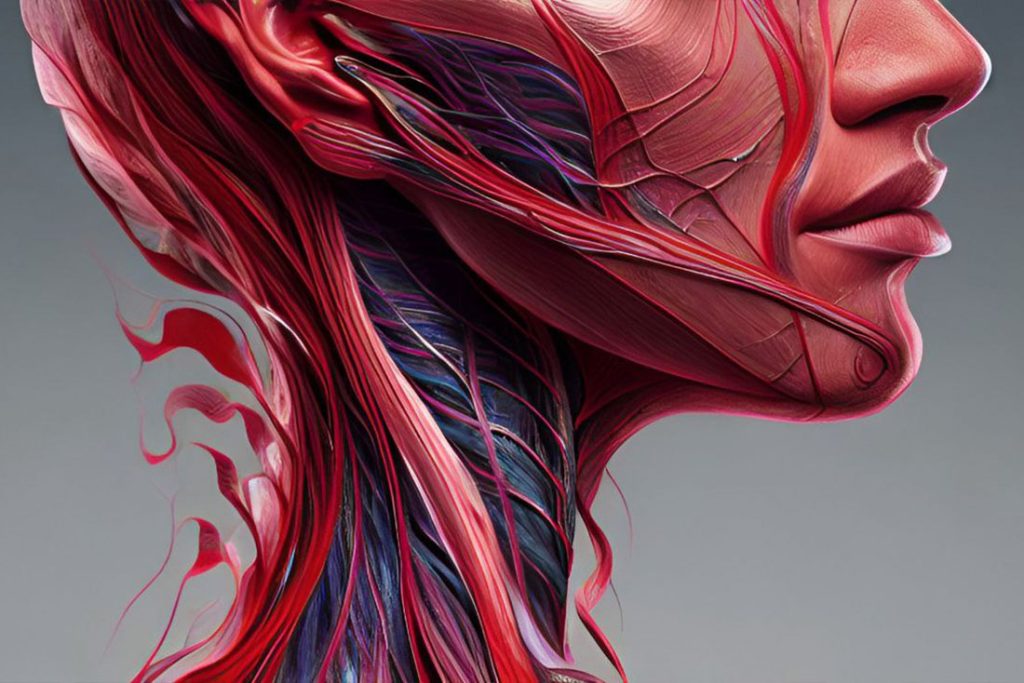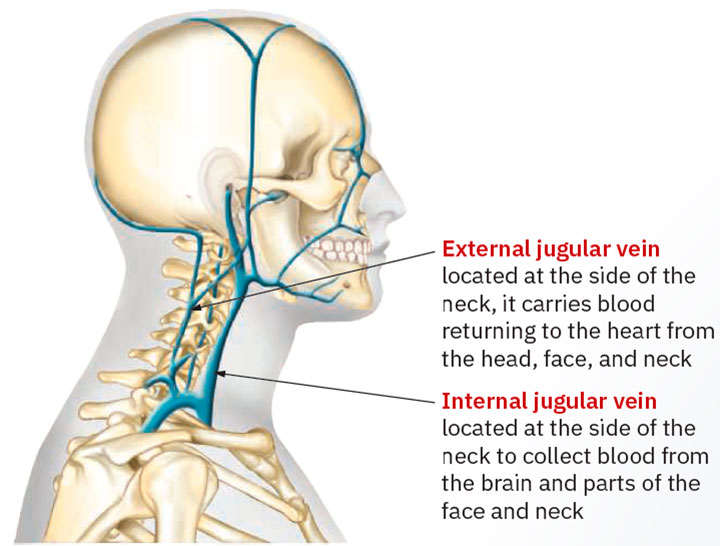Recognizing the Vital Veins of the Head, Face, and Neck: A Comprehensive Guide for Beauticians
The circulatory system’s veins play a crucial role in carrying deoxygenated blood back to the heart from various parts of the body. In the realm of cosmetology, understanding the anatomy of the significant veins in the head, face, and neck can greatly enhance the effectiveness and safety of various treatments. This article delves into the importance of two main veins crucial for beauticians: the external jugular vein and the internal jugular vein.

Vital Veins of the Head, Face, and Neck
Key Veins in Cosmetology
- External Jugular Vein: Located at the side of the neck, the external jugular vein is responsible for returning blood from the head, face, and neck to the heart. Its close proximity to the skin surface makes it an important consideration during cosmetology procedures, particularly when using tools or applying pressure. Knowledge of this vein is critical during facial massages or treatments near the neck to ensure adequate and safe blood flow.
- Internal Jugular Vein: Situated alongside the neck, the internal jugular vein collects and carries blood from the brain and parts of the face and neck. While the vein itself is not typically directly accessed during cosmetology procedures, understanding its location and function can help identify signs of potential circulatory issues or swelling that might require medical attention.

Significance of These Veins in Cosmetology
Having a thorough understanding of the head, face, and neck veins is invaluable for beauticians. Not only does this knowledge enhance the safety of procedures by reducing the risk of vein injury, but it also contributes to a more holistic understanding of the body’s circulatory system.
Moreover, by understanding the pathway of these veins, beauticians can more accurately locate motor points, apply massage movements, and perform scalp treatments without causing discomfort or potential harm to clients. Such understanding also contributes to more effective communication with clients, explaining why certain precautions are necessary and how various treatments are designed to work with, not against, their body’s natural systems.
A comprehensive knowledge of the circulatory system’s veins is vital for a beautician aiming to provide the best service. By understanding the path and function of the veins in the head, face, and neck, beauticians can enhance their service safety, effectiveness, and overall client satisfaction. This understanding allows them to skillfully navigate around these important circulatory structures and adapt treatments to each client’s unique physiology, thus ensuring a high level of professionalism within the beauty industry.






